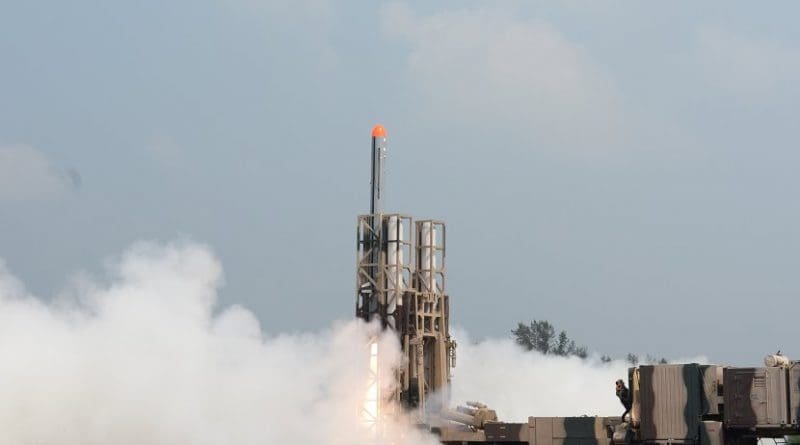Indian Space Weaponization And Integration Of Its Ballistic Missile Defense – OpEd
By Sher Bano*
The proliferation of space technologies in the South Asian region has been quite a worrisome phenomenon. It has further complicated the regional security environment by significantly increasing the prospects of wars and conflicts. India aspires to have a military presence in outer space and to be regarded as among the few countries that possess this capability. Under its quest to achieve great power status, India has been working rigorously to enhance its space program at the indigenous level and also through cooperation with the US. India’s space aspirations pose a serious challenge to Pakistan’s security since the latter’s space program is yet to take off. In this regard, a very alarming fact is that India intends to acquire more remote sensing satellites in ‘LEO’ (Low Earth Orbit) which would further destabilize the region. Without having the remote sensing satellite in LEO the Indian enhanced ‘BMD’ (Ballistic Missile Defence) systems cannot work proficiently. The more functional ‘BMD’ system would provide a higher probability of survival for the Indian arsenals and further ensure the second-strike capability. This integration of Indian BMD with its space satellites would increase the chances of war in South Asia.
In order to contemplate the first strike, ‘ISR’ (Intelligence, Surveillance, and Reconnaissance) capabilities are the prerequisite for any state. Space-based assets play a very important role in this regard by providing reliable ‘ISR’ data and early information at times when other military equipment becomes ineffective. To enhance its target acquisition capability, India has increased the constellation of navigational, communication, and remote sensing satellites. Similarly, the Indian dedicated geostationary satellite GSAT-7 having ‘C3’ (Command, Control, and Communications) capability would support the delivery of Ballistic Missile in case of a war in the future. This capability would provide India with confidence that its BMD system is capable enough to detect any incoming missile during a conflict. It would embolden India with an advantageous position vis-à-vis Pakistan to go for a pre-emptive strike.
The rapid space weaponization by India has tilted the conventional balance in its favor. By providing the early detection of an incoming missile, the Indian network satellites in space would further strengthen its ‘BMD’ shield. Moreover, after the acquisition of S-400, the world’s most advanced air defence shield from Russia, India would likely integrate it with its space-based early information system. India has also developed anti-satellite (ASAT) capability owing to its BMD Program and its Inter-Continental Ballistic Missile (ICBM) development. The purpose of ASAT capability is to target the rival satellites and achieve complete space dominance over the region. Hence this disparity between India and Pakistan with regards to the dependence on space-based assets would likely compel Pakistan to take countermeasures.
India’s development in domains like; ASAT and BMD, and its continuous attempts of space weaponization would bring severe implications for the South Asian strategic stability. With the provision of its increased capability of identifying the adversary’s target, the temptation to perform the first strike also increases. Hence, Pakistan would be left with no choice but to ensure a higher level of alert and further rely on its nuclear capability to play the deterrence role. Moreover, if India opts for a nuclear first strike that is facilitated by its advanced space technologies, Pakistan might be facing a dilemma or scenario of use it or lose it. Acquisition of offensive space capabilities could also lead to the adoption of aggressive military doctrines and a hostile political outlook. Pakistan on the other hand would likely rely on its existing credible nuclear deterrence posture until and unless it decides to acquire such space-based capabilities.
In order to counter Indian space militarization while staying within the existing doctrinal posture of minimum credible deterrence, Pakistan needs to carefully re-evaluate both its strengths and shortcomings. It needs to capitalize on strengthening its missile program by developing the latest versions of cruise missiles and “MIRVs” (Multiple Independently Targetable Reentry Vehicles) systems that can penetrate the Indian advanced air defence shield. Under the vision 2047 of ‘SUPARCO’, Pakistan needs to be very vigilant of the emerging Indian threats and develop an indigenous observation and surveillance capability that can be used to identify Indian offensive military assets. Moreover, Pakistan must continue its efforts for the demilitarization of space by highlighting the threat posed by the Indian endeavors regarding space weaponization in the region. Apart from these, Pakistan needs to be selective in its calculated responses since acquiring a BMD system or ASAT capability could be a long-term option. Hence, Pakistan can also focus on using disruptive technologies such as laser attacks; cyber-attacks, and jamming that can target Indian space assets at least for the time being.
Hence, the strategic stability of South Asia has become further undermined and the region has become more volatile since India has brought the arms race to outer space. With the development of advanced space technologies by India and integrating it with ground-based defence systems, the probability of a nuclear first strike has also increased. India’s offensive military modernization drive along with the acquisition of advanced surveillance and situational awareness capabilities has further limited the prospects of conflict resolution in the region. This dynamic is exacerbated by space-based technologies that hold destabilizing outcomes for the overall regional security and stability.
*The writer is working as a Research Affiliate at the Strategic Vision Institute (SVI), a non-partisan think-tank based out of Islamabad, Pakistan

